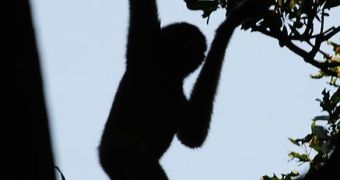Climate change correlated with other natural and man-made factors draws up a tough challenge for twenty three primates, representing all that is left of the once numerous Hainan gibbons (Nomascus hainanus) species.
A recent study issued by Greenpeace indicates habitat loss is one of the powerful main elements pushing the gibbons on the verge of extinction, Mongabay reports.
The report shows these primates are losing 20 hectares of irreplaceable habitat on a daily basis. All in all, the creatures don't stand a chance when dealing with the human factor, responsible for extended deforestation in Hainan. Since 2001, vulnerable gibbons have been forced to give up more than one quarter of their initial territory.
Even if there is a legal framework meant to protect the environment from illegal disrupting activities, the set of regulations proves to be inefficient. Currently, the team of researchers is concerned about the fate of the 23 rare animals and combine field work with satellite information to establish the gravity of the threat.
At this point in time, such initiatives are welcomed, but might become irrelevant unless the government plans to offer financial support for this kind of operations.
"This illegal deforestation comes in response to market demand and disrespect for nature.In this case, the local government has the ability to stop the rainforests and the gibbons from disappearing from Hainan," declares Yi Lan, forests campaigner with Greenpeace.
The situation is even more complicated, since there are no Hainan gibbons in captivity. Usually, some of the members of endangered species are protected in conservation centers, but this time experts have failed in placing these animals in such facilities.
Biologists are certain that 50 years ago, when forests succeeded in preserving their natural balance, woodlands were the home of 2,000 Hainan gibbons.
Unless special funds are used to empower special preservation measures, world's most threatened primates will continue losing land until there is no place left to run and hide from extinction.

 14 DAY TRIAL //
14 DAY TRIAL //